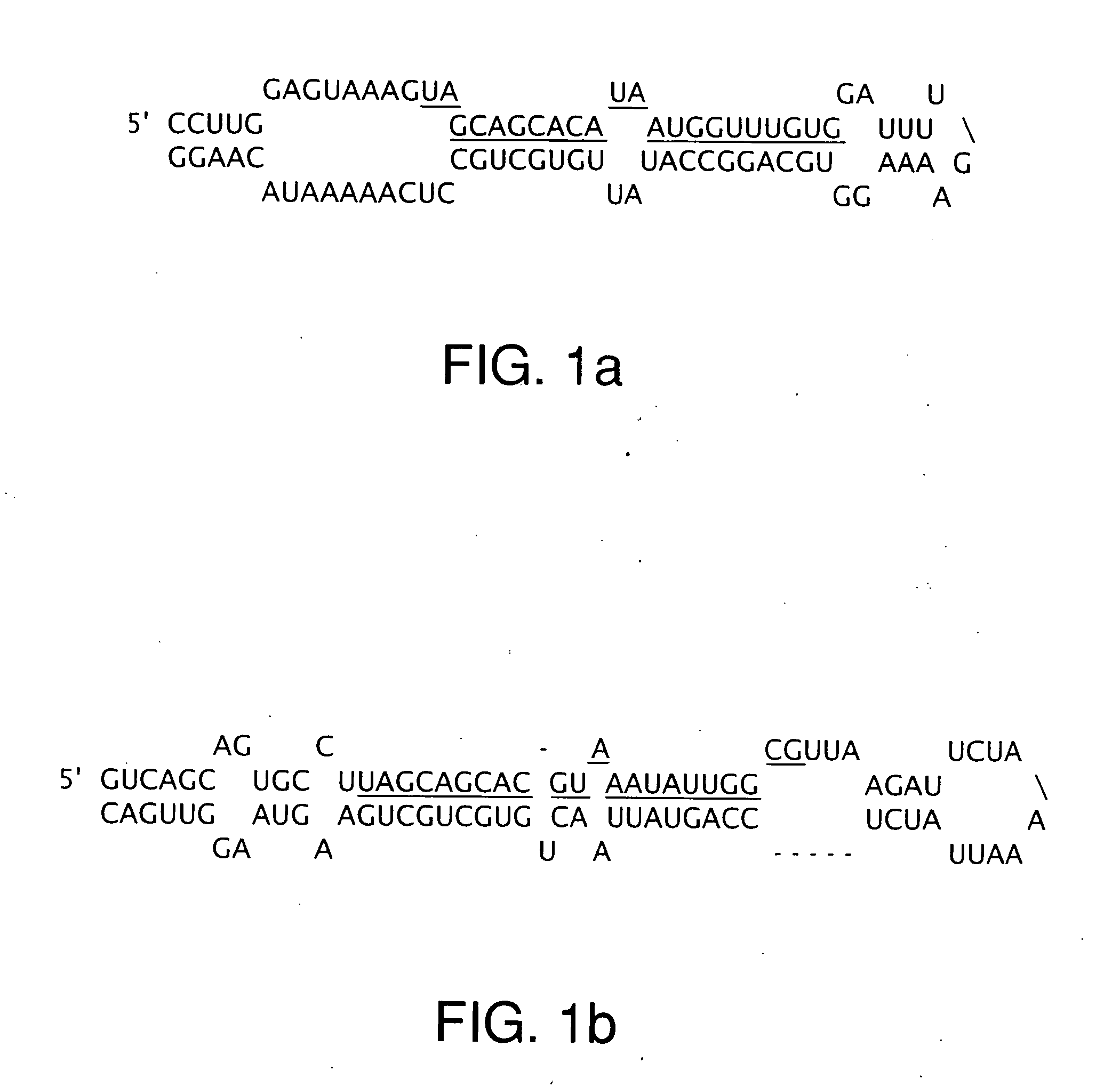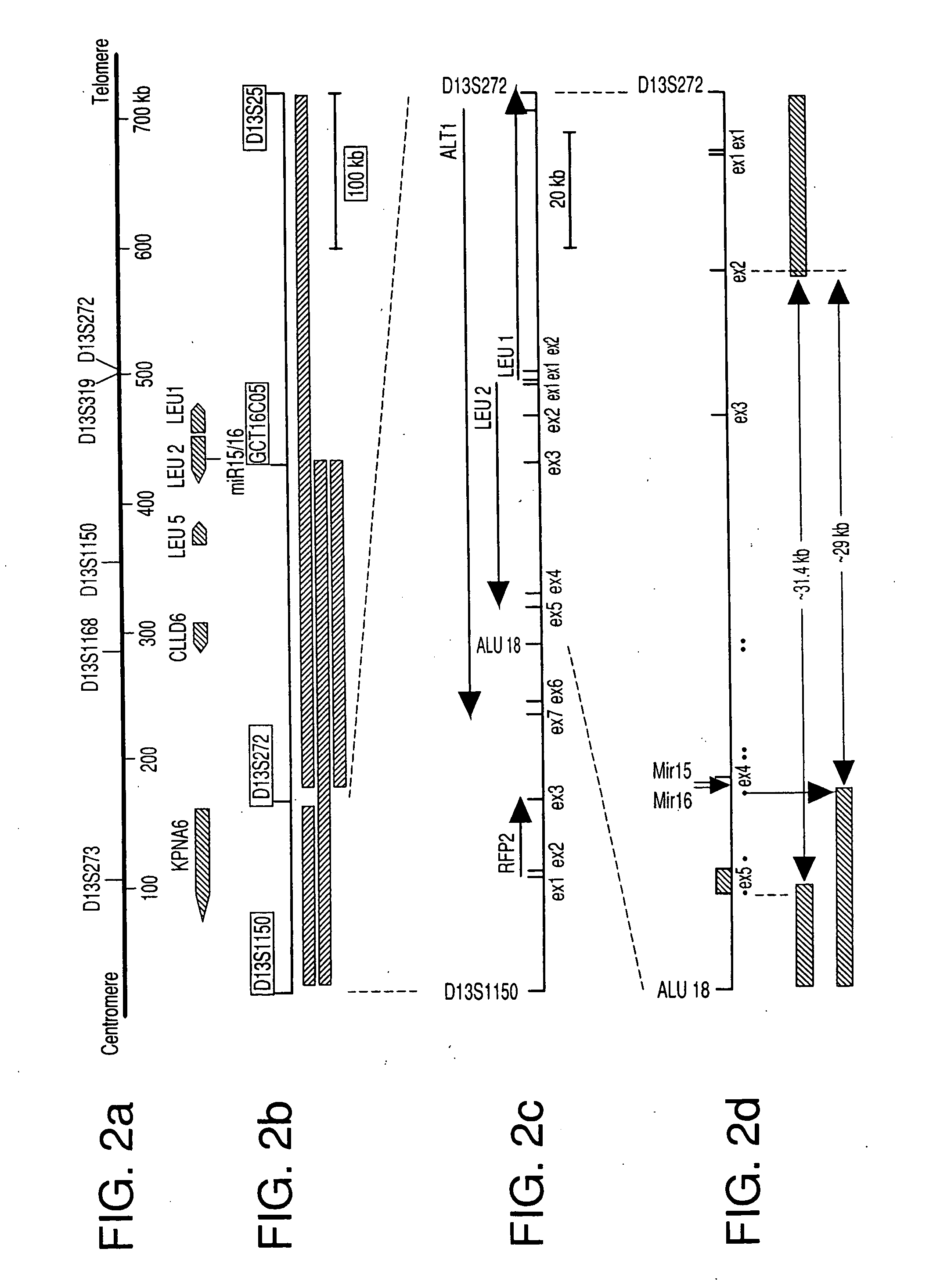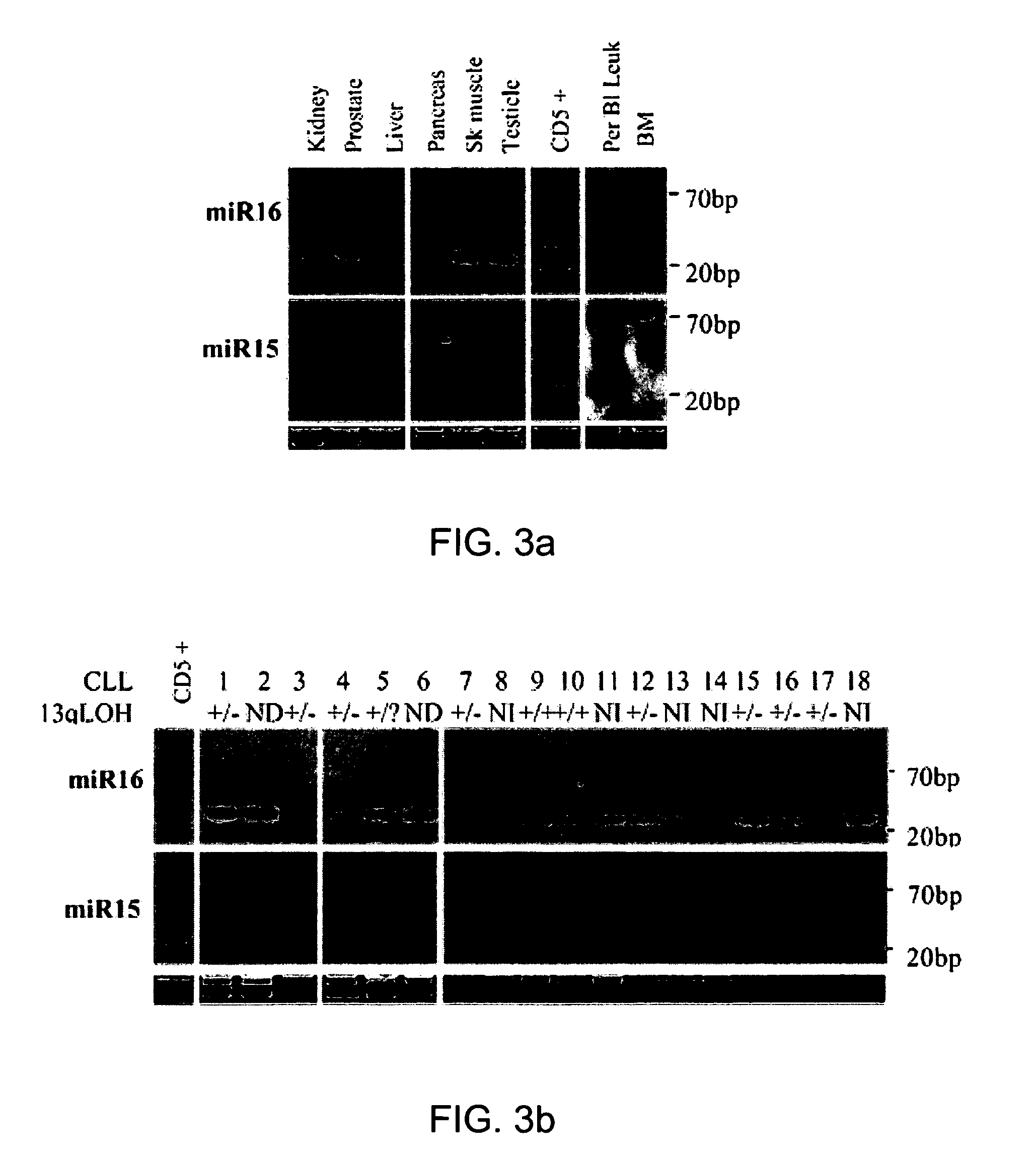Compositions and methods for cancer diagnosis and therapy
a cancer diagnosis and cancer technology, applied in the field of cancer diagnosis and treatment, can solve the problems of inability to demonstrate inability to detect the consistent involvement of any of these genes in carcinogenesis, and general toxicity of chemotherapy agents employed, so as to inhibit the growth of neoplastic or tumorigenic cells
- Summary
- Abstract
- Description
- Claims
- Application Information
AI Technical Summary
Benefits of technology
Problems solved by technology
Method used
Image
Examples
example 1
A 30 kb Deletion Region in Somatic Cell Hybrids of CLL Patients
[0132] Heretofore, there has been no clear definition of the minimal region of loss at 13q14 in CLL patients. Previously, various and relatively large (between 130 to 550 kb) regions deleted in 13q14 have been described in CLL (see FIG. 2B). LOH and Southern blot analyses were used to identify the centromeric boundary of homozygous loss at the Alu18 locus (FIG. 2D), which is located between D13S1150 and D13S272 less than 65 kb centromeric to exon 5 of the LEU2 gene. However, no small or overlapping homozygous deletions were found that allowed a better localization of the target tumor suppressor.
[0133] To better define the region of loss in CLL, somatic cell hybrids of mouse LM-TK− and CLL cells carrying 13q14 translocations and / or deletions were generated. PCR screening of resulting hybrid clones allowed the segregation of the two copies of chromosome 13 present in the tumors. In this manner, a 31.4 kb deletion was ide...
example 2
The miR15 and miR16 Genes are Localized in the Minimally Deleted Region of Chromosome 13 and are Highly Expressed in CD5+ Cells
[0135] Publicly available sequence information and databases were screened for new regulatory genes in the minimal region of loss at 13q14. A cluster of two recently cloned miRNA genes, miR15 and miR16, were located exactly in the deleted region (FIG. 2A). To evaluate the level of expression of miR15 and miR16 in normal tissues, Northern blot analysis of miR15 and miR16 RNA was performed on a panel of normal-tissues, including CD5+ B cells isolated from tonsils of normal individuals (FIG. 3A). CD5+ B cells were used as controls, because B-CLL is characterized by a progressive accumulation of CD5+ B-lymphocytes. Ubiquitous expression of both miR15 and miR16 genes was found, with the highest level in normal CD5+ lymphocytes. In addition, miR16 was consistently expressed at higher levels than. miR15 in normal tissues. These data indicated that the miR15 and mi...
example 3
The miR15 and miR16 Genes are Frequently Deleted or Downregulated in CLL Samples with Deletions at 13q14
[0136] To investigate whether the miR15 and miR16 genes were involved in CLL pathogenesis, 60 CLL samples and 30 human cancer cell lines were analyzed for miR15 and miR16 expression by Northern blotting (FIG. 3A). 68% of CLL patients (41 / 60), as well as 5 out of 6 analyzed prostate cancer cell lines, showed a significant reduction in expression when compared with their normal tissue counterparts. These findings demonstrated that the miR15 and miR16 genes are down-regulated in the majority of B-CLL and prostate cancer cases tested.
[0137] In addition, 23 out of 60 CLL samples (38%) presented a clearly identifiable band of about 70 nt representing the miR15 precursor RNA. The 70 nt miR15 band was not found in any normal tissue analyzed except for bone marrow (FIG. 3A), which indicated that miR15 precursor RNA could be inefficiently processed in CLL.
[0138] To determine whether the ...
PUM
| Property | Measurement | Unit |
|---|---|---|
| weight | aaaaa | aaaaa |
| volume | aaaaa | aaaaa |
| number-average molecular weight | aaaaa | aaaaa |
Abstract
Description
Claims
Application Information
 Login to View More
Login to View More - R&D
- Intellectual Property
- Life Sciences
- Materials
- Tech Scout
- Unparalleled Data Quality
- Higher Quality Content
- 60% Fewer Hallucinations
Browse by: Latest US Patents, China's latest patents, Technical Efficacy Thesaurus, Application Domain, Technology Topic, Popular Technical Reports.
© 2025 PatSnap. All rights reserved.Legal|Privacy policy|Modern Slavery Act Transparency Statement|Sitemap|About US| Contact US: help@patsnap.com



